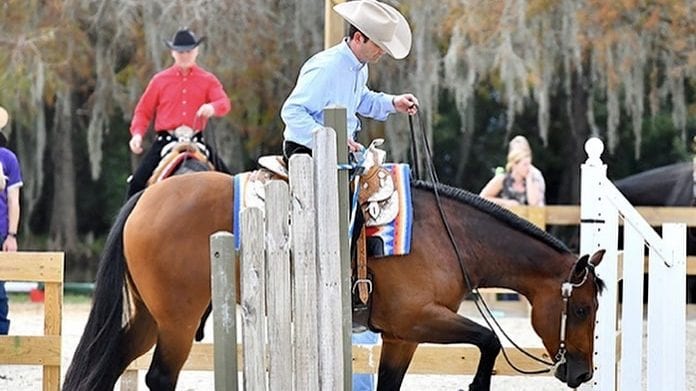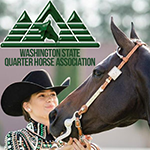Trail is debatably one of the most fun classes to watch and participate in. It requires a very particular horse; one that is careful, attentive, and knows what they’re doing.
According to the AQHA rulebook, a trail horse should work through obstacles, “with style and some degree of speed…Horses should receive credit for showing attentiveness to the obstacles and the capability of picking their way through the course when obstacles warrant it and willingly responding to the rider’s cues on more difficult obstacles.”
Keeping this in mind, Ashley Dunbar-Clock, of Highpoint Performance Horses, and Tonya Brown of Tonya Brown Quarter Horses, discuss what type of horse will take you to the next level in the trail.
They are focused on the task at hand.
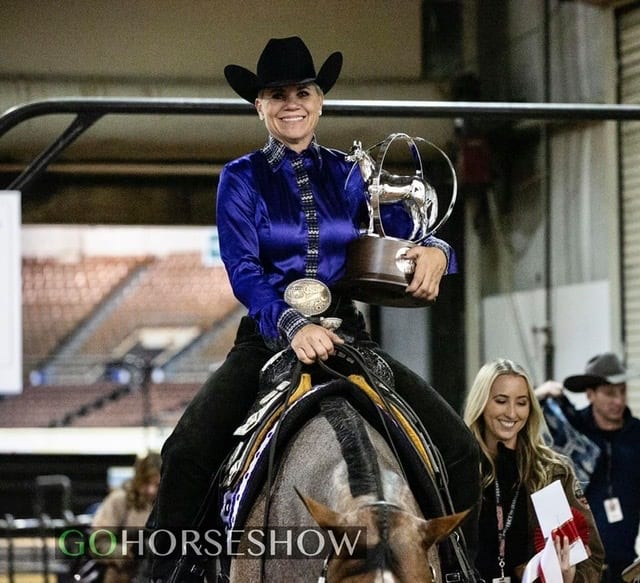 Trail is a class that requires precision and concentration. To succeed in the class, your horse must be focused too.
Trail is a class that requires precision and concentration. To succeed in the class, your horse must be focused too.
“They need to have a good mind, and be very willing,” Brown said. “They can’t be spooky or afraid. I like a brave horse.”
There are a lot of distractions in a trail pattern, so having that focus will allow your pattern to look more put together.
“The horse has to have a mindset that can focus and be a little quieter,” Dunbar-Clock said. “I’ve had plenty of busy-minded ones that are super talented, but it’s just a little more work to get them to that top level. I like the quiet, focused, easy-going ones.”
A gentle one will make up for your mistakes.
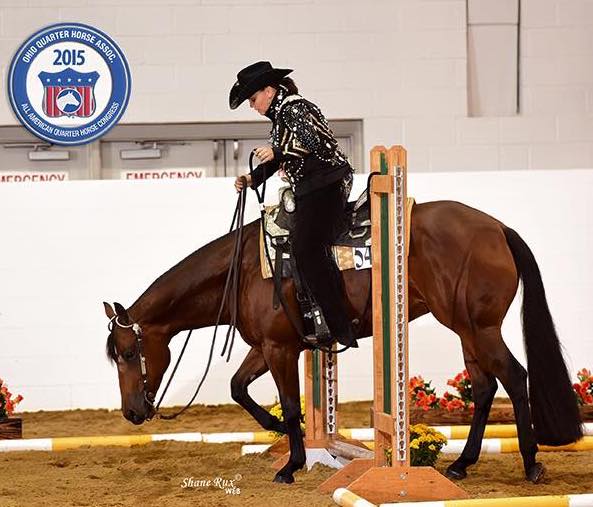 Stepping over poles, spinning in tight boxes, and maneuvering around a gate are just a few of the things a trail pattern might ask of you. It’s easy to get your horse too close to obstacles or push them too much over poles. Having a horse that won’t react poorly to this could make or break your pattern.
Stepping over poles, spinning in tight boxes, and maneuvering around a gate are just a few of the things a trail pattern might ask of you. It’s easy to get your horse too close to obstacles or push them too much over poles. Having a horse that won’t react poorly to this could make or break your pattern.
“I try to teach mine to take care of their owners,” Dunbar-Clock said. “If there’s a misstep, or they put them in the wrong spot, the horse stands up and moves on and doesn’t make a big deal about it. Some horses like to jump and leap through, and don’t respect their rider.”
In addition to being forgiving, a horse that is coordinated can help with pilot error.
“It’s important for a trail horse to be careful about where his or her feet are,” Brown said. “Getting over the poles without touching is big.”
Every pattern is a new challenge.
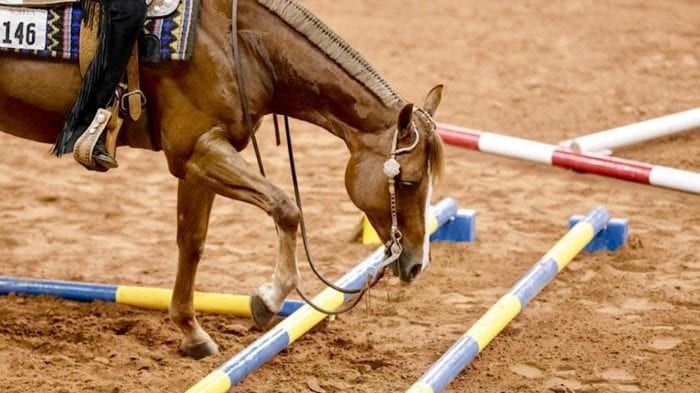 Trail is unique because you can never tell what’s going to happen until you’re at the start cone. A horse might react to the arena set-up, poles, and decorations differently each time.
Trail is unique because you can never tell what’s going to happen until you’re at the start cone. A horse might react to the arena set-up, poles, and decorations differently each time.
“I think trail is different from other events because every trail course is different, and it’s a new challenge every time you go in the pen,” Brown said. “You might have similar obstacles, but the spacing and how raised the poles are is different for every course.”
With other classes, like western pleasure or hunter under saddle, one can often predict the outcome of the placings by watching the warm-up ring. These classes are very much judged upon the movement and confirmation of the horse. With trail having different obstacles and patterns, it’s more of a gamble.
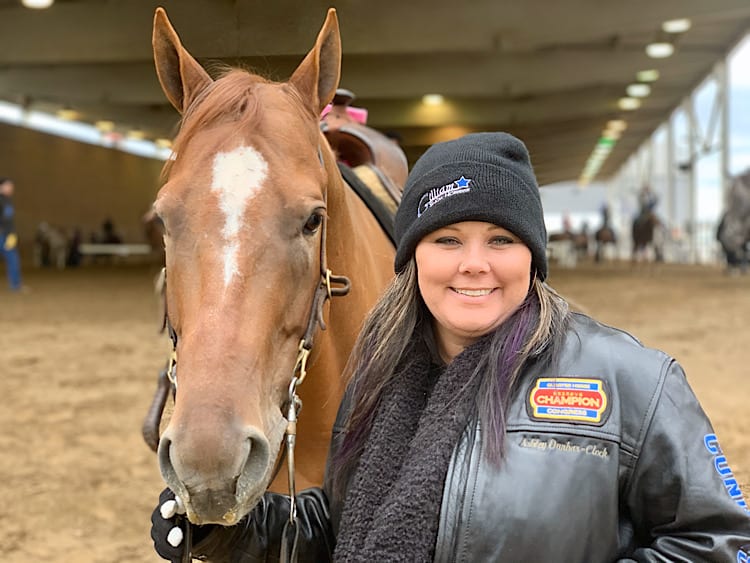 “The thing is for a lot of those classes, you can buy the winner,” Dunbar-Clock said. “But the trail is special because it has a unique course that day. It’s everyone’s game, and there’s not one person, in particular, that’s unbeatable. You can have horses in other events that are hard to get around. But in the trail, even the greatest ones have bad days. So that’s kind of why I like it the best. It’s anyone’s game, and it’s a fair chance, no matter who you are.”
“The thing is for a lot of those classes, you can buy the winner,” Dunbar-Clock said. “But the trail is special because it has a unique course that day. It’s everyone’s game, and there’s not one person, in particular, that’s unbeatable. You can have horses in other events that are hard to get around. But in the trail, even the greatest ones have bad days. So that’s kind of why I like it the best. It’s anyone’s game, and it’s a fair chance, no matter who you are.”
Work together for a polished pattern.
A perfect trail pattern is the result of a good relationship between the horse and rider. Finding your ideal trail horse will lead to a clean, flawless pattern.
 “A perfect trail pattern is soft and flowy. I don’t like it when there’s jerkiness or a lot of movement up in the rider. Just hand down, real soft, and it looks effortless,” Dunbar-Clock said. “The horse looks like it’s enjoying its job, and it’s right there with the rider.”
“A perfect trail pattern is soft and flowy. I don’t like it when there’s jerkiness or a lot of movement up in the rider. Just hand down, real soft, and it looks effortless,” Dunbar-Clock said. “The horse looks like it’s enjoying its job, and it’s right there with the rider.”
Once you find your perfect trail horse, practice is vital. Making sure your timing over poles is just right, and your cues are clear takes a lot of hard work and hours of training. It helps when your horse enjoys their job and looks forward to working. All that practice will pay off, and it will result in great patterns.
“The big thing is them not being dull and being able to guide,” Dunbar-Clock said. “When that neck rein hits their neck, they’re turning. If you use a little foot, they’re lifting and shaping off of it, or pushing around to help guide. That’s the biggest thing. If you can get one guiding and steering really well and reactive in a good way, off of your rein and your leg, it makes it look effortless.”
Trail can be a tricky class to master. But, having a horse that understands what you’re asking, forgives your mistakes, and loves their job makes it that much easier.


